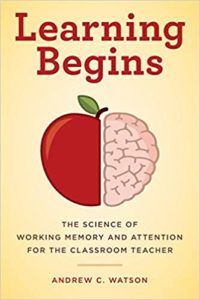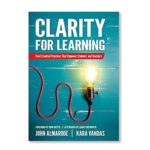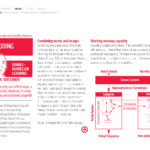We’ve taken the summer to explore working memory together.
 You know how to define it.
You know how to define it.
You know key facts about it.
You can anticipate and recognize working memory overload.
And, you can solve those WM problems.
To conclude this series, I’d like to give you a few extra WM resources to draw upon.
The Book, and The Web
I’ve written a book about working memory called Learning Begins. In fact, the articles from this summer draw heavily on the structure of that book. If you have enjoyed this overview, I hope you’ll enjoy its fuller exploration as well.
This post by Efrat Furst explores the relationship between working memory and long-term memory.
This gif by Nick Harvey Smith prompted GREAT discussions at a recent presentation on WM.
Adam Boxer summarizes Cognitive Load Theory here. As Boxer explains, CLT wasn’t created with teachers in mind. I myself find it a) really interesting and b) more jargony than is useful for most teachers. But, if you want a deep dive, this is a great place to dig. (More CTL resources here.)
You can test out your own working memory — and experience WM overload — here.
The Research and the Researchers
Unsurprisingly, psychologists and neuroscientists have published thousands of research studies on the subject of working memory. This list gives a brisk introduction to the topics, opinions, and approaches you can find once you start exploring.
What, exactly, are the differences between short-term, long-term, and working memory? Nelson Cowan has some answers.
Alan Baddeley offers the best known model of WM. He summarizes his research and opinions here.
How does WM develop during school years? Susan Gathercole has data.
Nope. WM training does not work. Really, just, no.
WM works more efficiently with information we already know well than with new information (like the information students get because “they can just look it up on the internet”).
Too many instructions tax working memory.
Frederique Autin and colleagues explain that we can free up WM by reducing students’ stress levels. The specific strategy: have them think differently about the cognitive challenge they face.
The relationship between WM and creativity? Shelley Carson has you covered.
We can free up WM capacity by using the right teaching strategies.
If you’re interested in a technical exploration of WM, executive attention, and the prefrontal cortex, check out Michael Kane’s work here.
And Finally, An Offer…
I love thinking about and talking about working memory. If you have a question or a crazy idea, feel free to email me: [email protected].





A great read.